Synths Are Scams, Sinevibes Plugins for Korg NTS-1 MKII and NTS-3, Behringer MS-5 Demos: Synth Journal
The best of the rest of this week's synth news.
Espen Kraft says synths are scams. Is he right or just trolling? That plus Sinevibes Korg plugins, Behringer MS-5 demos and more in this week’s Synth Journal.
Synth Journal
Synths Are Scams?
Espen Kraft broke the synthternet this week with his video, “The great synthesizer scam | How they reel you in.” In it, he outlined how synths are scams and the price of hardware synthesizers is extremely inflated, especially given that many are essentially just “VSTs in boxes.” Even modern analog synths are largely digital, he points out, with digitally controlled envelopes, LFOs, etc. Some of the synths on his scam list are the Oberheim OB-X8, Sequential Prophet-5, Roland Jupiter-X and Juno-X and the Moog Muse.
Instead of paying large sums for hardware synths, he recommends buying software instead. He does recommend the ASM Hydrasynth though, even though he admits to not owning one.
Espen’s video seemed to strike a chord with the YouTube synth community, with a number of reaction videos dropping, all disagreeing with his opinion that synths are scams.
Espen’s response? He started a new channel and posted a rebuttal video called “I made the synth world go mad | Here is my reaction TO the reactions.” And his reaction? He reads The Fox and the Hound, a kid’s book version of the 1981 Disney movie. In Norwegian.
What do you think about Espen and his video? Do you believe synths are scams and that hardware synths – even analog ones – are just VSTs in boxes? Personally, I don’t think so. Whether there’s software inside or not, synthesizers are musical instruments to be played. You’re paying for that musical experience. Let us know what you think in the comments.

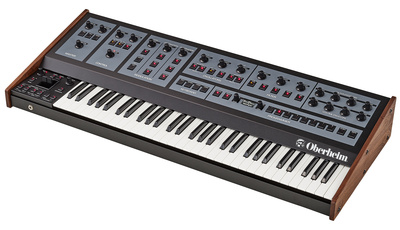

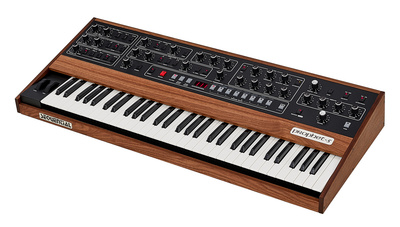

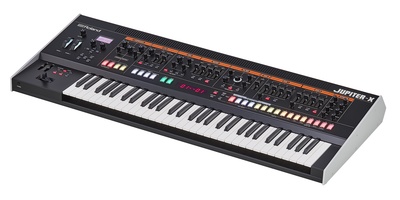

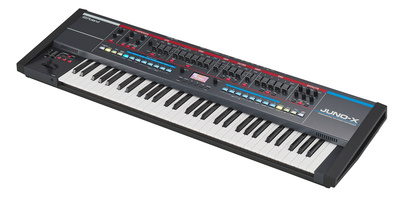

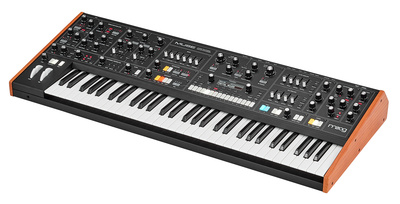

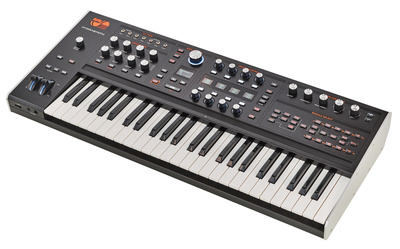
- Espen Kraft’s YouTube channel page
New Sinevibes Plugins Available for Korg NTS-1 MKII and NTS-3
Digital effects specialist Sinevibes has updated a number of its Logue plugins to now work in the newly available Korg NTS-1 MKII and NTS-3 Kaoss Pad Kit.
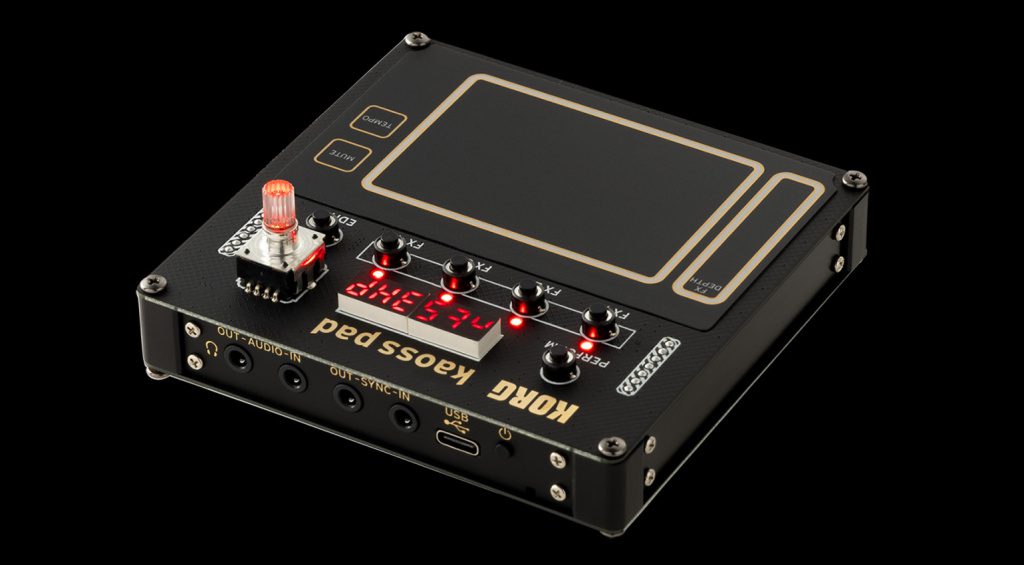
If you’re unfamiliar with the whole Logue thing, basically some of Korg’s products feature a user oscillator and updatable effects section. Sort of like a hardware plugin host. Sinevibes makes a number of oscillators and effects for the Logue line, many of them compatible across the entire line of Prologue, Minilogue XD, NTS-1, NTS-1 MKII and NTS-3.
The most recent Sinevibes plugins to get updated for the NTS-1 MKII and NTS-3 include Albedo v2, a granular cloud reverb, the multi-algorithm distortion Corrosion v3 and Vibrant, a “deep phaser.” They join the Blend v2 chorus, Dipole v2 flanger and Whirl v2 phaser.
If you’ve already purchased one for a previous device, there’s no need to purchase again, as they’re compatible across multiple devices.

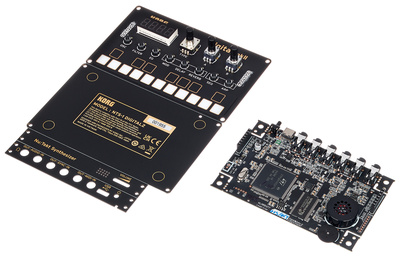

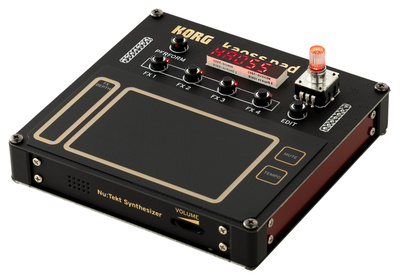
- Sinevibes home page
Hainbach Makes Ondioline Album
In 1939, Georges Jenny built the first Ondioline, a monophonic analog electronic instrument often considered to be a forerunner of the synthesizer. By setting switches on the panel, you can get a variety of unique sounds from it. The pressure-sensitive three-octave keyboard is particularly expressive and you can wiggle the keys for vibrato like on an Expressive E Osmose.
YouTuber and experimental musician Hainbach made a great video introducing the Ondioline a week or so back. Now he’s put out another one, this time of a performance, and released an album of Ondioline songs called Breve as well. Interestingly, Hainbach borrowed the Ondioline from Forgotten Futures, a non-profit organization founded by musician Gotye.
The album is available on his Bandcamp page in vinyl, cassette and download options.
- Hainbach Breve Bandcamp page
MoForte GeoShred Studio for Mac
From Hainbach to Jordan Rudess, we now move to MoForte GeoShred Studio. You may remember the original GeoShred, a series of iOS apps for iPhone and iPad that let you play physically modeled instruments using a non-conventional note grid.
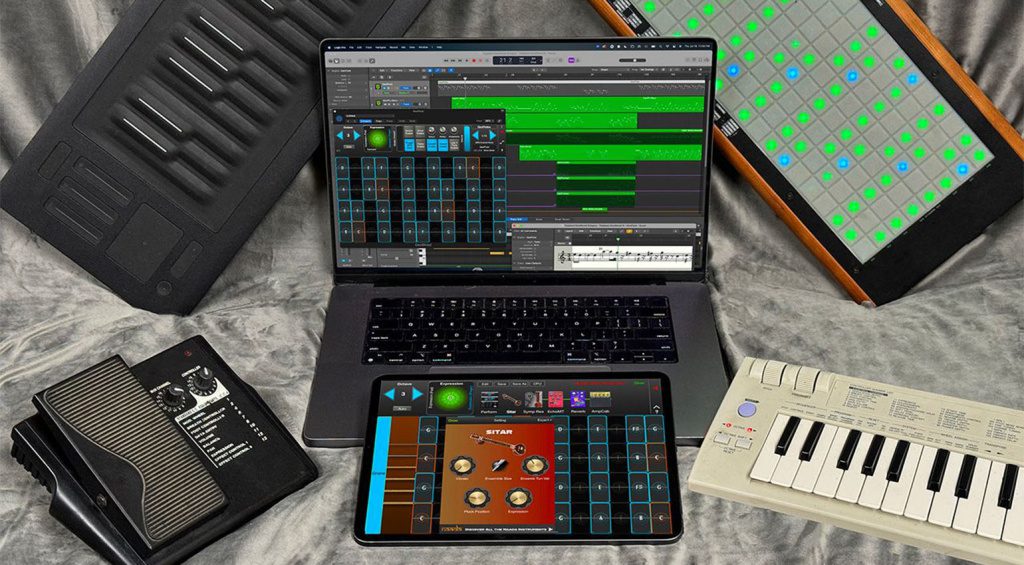
The company has just released GeoShred Studio which moves the app from iOS to MacOS as an AUv3 plugin for desktop DAWs that support the AUv3 format. As the app is all about using the special control surface, those with Apple devices like an iPhone or iPad can control GeoShred Studio from an existing GeoShred iOS app or the free GeoShred Control MPE iOS app. It also supports MPE controllers, conventional MIDI controllers and even breath controllers.
You can download the app for free from the Mac App Store. GeoShred Studio costs $50 to unlock. Additional instruments are $50 each.
- MoForte GeoShred Studio product page
Behringer MS-5 Demos
I have a confession to make. I often mix up the Roland SH-5 and SH-7. Both are analog monosynths from the mid-1970s, except that the SH-7 had the additive oscillator section and the SH-5 has a rather well-regarded clone from Behringer. Called the MS-5, it features two oscillators, two filters (a multimode and a bandpass), two envelopes, two LFOs, and sample and hold.
Just this past week, two demos came out for the MS-5 and they both sound very, very good. The first, from Limbic Bits, pairs it with an Empress Reverb and puts it through its paces.
The second demo, this one from Wine&Synths, has it in a more musical context, pumping along at a cardio-friendly 135bpm.
The MS-5 sounds very nice indeed and recreates a fun era in Roland synths. We tend to think of Roland analogs as being clean and polite like the Jupiter-8 and Juno-106. But go back a decade to the 1970s and things get a little more muscly. My System-100 is the beefiest synth in my studio by far and it’s what I reach for when I need bass that makes you say phwoar, something to grab you by the collar.
Throbbing Gristle loved this Roland era too, using the SH-5 and SH-7 among others. They even took a photo with all of their Roland gear out hoping to get a sponsorship deal from the company. Roland passed. But this should tell you something about the sheer sonic power of the SH-5 and the other 1970s Roland monosynths.

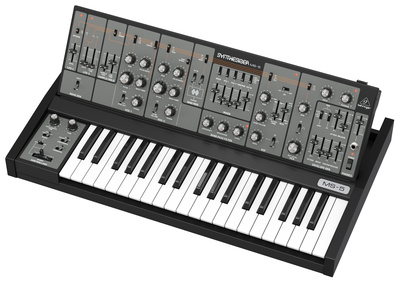
- Behringer MS-5 product page
More Information
- All about synthesizers
10 responses to “Synths Are Scams, Sinevibes Plugins for Korg NTS-1 MKII and NTS-3, Behringer MS-5 Demos: Synth Journal”

 4,0 / 5,0 |
4,0 / 5,0 | 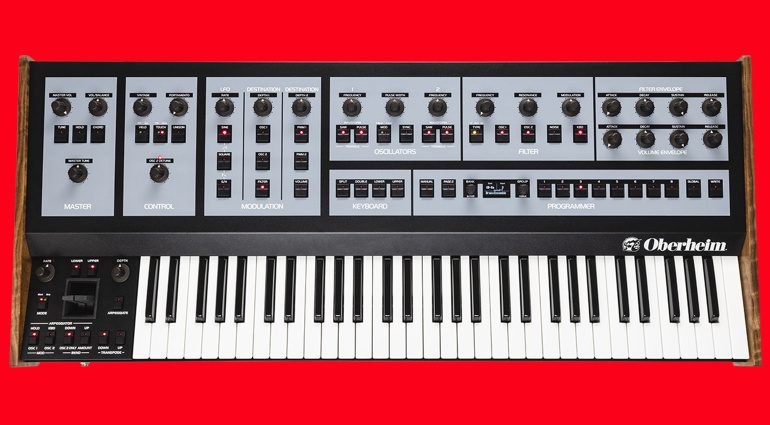




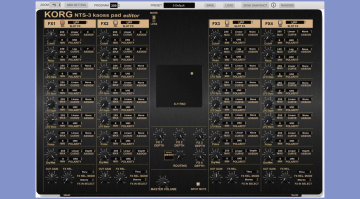


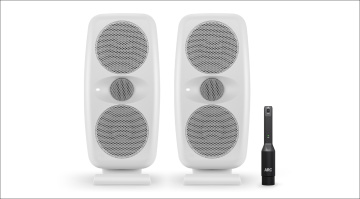
I’ve been following Espen Kraft’s channel since 2016. From what I can tell, Espen is a musician. He composes music for clients and for commercial release, does live performances, runs a YouTube channel and sells presets… and has even made beautiful scenic videos of Norway with his music Smile smiley
I was attracted to Espen’s channel because he played sounds and compositions that I loved listening to. Among his sounds were those gorgeous warm pad sounds heard in Pet Shop Boys tracks and 1980’s Tangerine Dream.
But I was puzzled as to why Espen was using old equipment to produce those sounds and that kind of MIDI-intensive music, given how far music technology has advanced since the 1980s. The reason people back then subjected themselves to sequencers that look like data-entry business machines and un-reliable keyboards and rack mounted sound modules interconnected via miles of expensive cables was because they had no other choice. Why bother with all this in 2016?
I assumed he did this because he was nostalgically connected to that type of equipment and was too young to have access to it when it first came out. As his very own song (’88 Too Late) goes, he was “25 years too late”, but better late than never, and so he took advantage of the fact that he could finally amass this gear and produce music, just like the professionals did in the 1980s when he was around 13-20 years of age.
But what I picked up from his channel was that he usually or (if I remember correctly) only uses computers for composing music for clients. This makes sense because it is far more efficient and cost effective to work with a computer for recorded compositions than working with old equipment.
So this got me thinking that maybe Espen thought that given the increasing YouTube interest in hardware synthesisers and related gear (which was clearly apparent around 2015) he could contribute in some way to the community by sharing his own take on electronic music production and gear. And it was an interesting take. Rather than showing off the latest gear and the latest ways of using gear to create electronic music, he chose to focus on the music-style he loved via the old gear he had amassed.
Whilst he could have shown how to create 80s-style compositions using just a computer (which he used for his professional client-based work) he chose to do it via the old equipment because he probably figured that might attract more people to his channel.
It worked for me, because I liked the way Espen helped me to appreciate how music was produced in the 1980s compared to now. And I came away understanding that the way music was produced in the 1980s was very very expensive, and very time consuming, and ironically, quite non-musical! It was mostly data-entry stuff on machines that looked like mainframe business computers or calculating machines.
When computer-oriented music production began to prove its worth in the 1990s there was no looking back. The advantages offered for creating complicated, MIDI-intensive, multi-instrumental electronic music were clearly obvious.
So, the way I see it, the whole “gear emphasis” on his channel was about his own personal interests and nostalgia. He never really showed much interest in contemporary gear except in isolated instances when that gear was relevant to his “old school” workflow.
Clearly, his interest in hanging on to probably a few too many old electronic instruments began to wane and he decided to sell them. And given that he makes most of his living composing via a computer I can see why his channel is moving more in the direction of composition as opposed to a focus on gear.
I suppose he could buy new gear that hails from the 1980s like the Oberheims, Moogs and Sequentials and, of course, the Rolands, but as he himself puts it, they are overpriced and being a composer composing music for clients, the computer is a more efficient cost-effective platform for commercial purposes.
It seems to me that a lot of the people getting pissed off with Espen simply don’t get where he’s coming from.
Nah, he just imploded and is ditching all his gear and ideals like everyone else on the internet with any clout whatsoever. It’s all fleeting, and big names cancelling themselves is the new marketing approach. It’s a dirty, but effective way to have a mid-life crisis/psychotic break all while pushing your brand. For him to “be the Eighties” and literally earn his entire following based on synths and then burning it all down, inadvertently means he…himself is a scam and is just another sad implosion statistic caused by the pandemic.
Agreed 100%. Self destructive behavior triggered by something outside of mere synths. It’s most obvious by his doubling down on his speech and creating a “new” channel (with a condescending video). Reminds me of a certain orange man we have running for office in the US….
I find it interesting… I a not worried why he has done so, but if he goes off into computer land, I’ll probably unsubscribe. Not because I am against it; it is just not for me. I record all my music live, live take after live take until I am happy enough.
VSTs are scam hence VST in a box is a scam too 😀
I don’t know why you share the stupid Espen video… the comments are full of actual industry professionals (mostly small) calling him out for spreading baseless BS and explaining why they couldn’t make synth cheaper if they wanted to.
The dude has no data, no experience and is surfing on widespread customers misunderstandings (for some reasons, synth nerds tend to reason like : “a Ferrari should cost the same as a Dacia because they both do the same thing”)
I dislike the tendency to try and discount people’s opinions you disagree with by playing armchair psychologist and claiming that the person you disagree with is so flawed anything they say has no value. Sounds like these people should try applying that logic to their own opinions and act on that by shutting their own mouths about personal stuff, and stick to the ideas and policies when it comes to music and politics. On the actual gear versus computer question, I’m a long time computer music fan, analog synth fan, and I’m a piano player who is yet to hear a virtual or electronic piano that fully emulates the depth and complexity of a real piano, especially an older one with flaws, and I think that guy was right in dismissing a lot of modern synths as being VSTs in boxes. But instruments like the new Udo Gemini with its analog knobs, and its touch ribbon, provide a tactile and physical UI which can tap into our ability to use physical muscle memory to free creative musical expression.
Great clickbait, finally Espen is lining up with the rest of the opportunist hunting their gullible prey on YouTube.
Highly entertaining responses!
A lot of truth in there for me.
I do think that certain synths are indeed very expensive for what they do. But hey, how could I ever ascertain, this many functions are worth this and less or more is that? I think that some manufacturers would sell a whole lot more if they had lower prices, given that a lot of stuff is made in “cheap-labour” countries. There are definitely some seeming scams around but OTOH, there is the issue with iconic names.
Moog, Oberheim e.g….
They were used by Iconic artists because a lot of times that’s what was available. (Yes there are brands that didn’t quite make it because they didn’t deliver on some level?)
There is a very real difference between the time invested in point-to-point solders vs pcb, so time IS money. BUT If SO many companies went bancrupt, OBERHEIM, Sequential, Linn, to name a few, itz cos they were very expensive, not only because the DX7 came about, right? LOL! But that’s also why not everybody is driving a Lambo or Ferrari… :0D
And yet a Minimoog for 8k Australian? Thanks but no.
Hello Arturia Micro/MiniFreak, Pittsburgh Modular any monophonic, WaldorfM(?)
Opsix and Wavestate and I’ll still have cash to hit a gorgeous A-DesignsPacifica preamp or Buzz Audio Elixir…!
Well I’ve been all-VST, and I’ve been all-hardware too, at different times. Can’t speak for anyone else, but I found the all-VST route eventually put me off wanting to make anything. Probably caused by sitting at the laptop for all tasks. By 2010 I’d collected enough cheap hardware to go back to it. I use the laptop and VSTs for sampling, mastering, recording only, and hardware for everything else. I’ve not been bored with it since doing it that way, as you can always trade a synth or swap one if you’ve done everything possible with them. But I know people who have no outboard, and they’re quite happy working that way, but it isn’t for me.
You are currently viewing a placeholder content from Facebook. To access the actual content, click the button below. Please note that doing so will share data with third-party providers.
More InformationYou are currently viewing a placeholder content from Instagram. To access the actual content, click the button below. Please note that doing so will share data with third-party providers.
More InformationYou are currently viewing a placeholder content from X. To access the actual content, click the button below. Please note that doing so will share data with third-party providers.
More Information